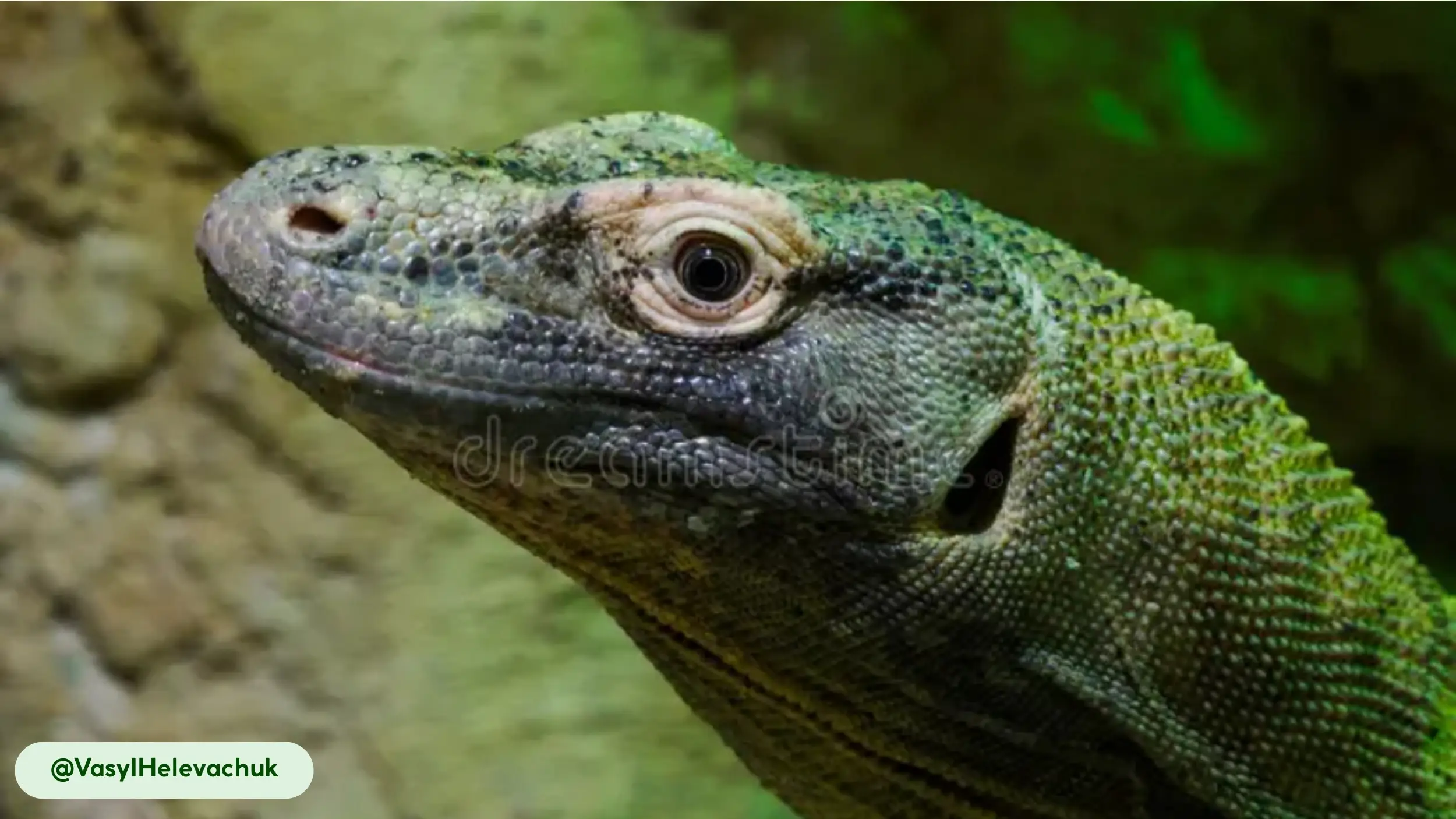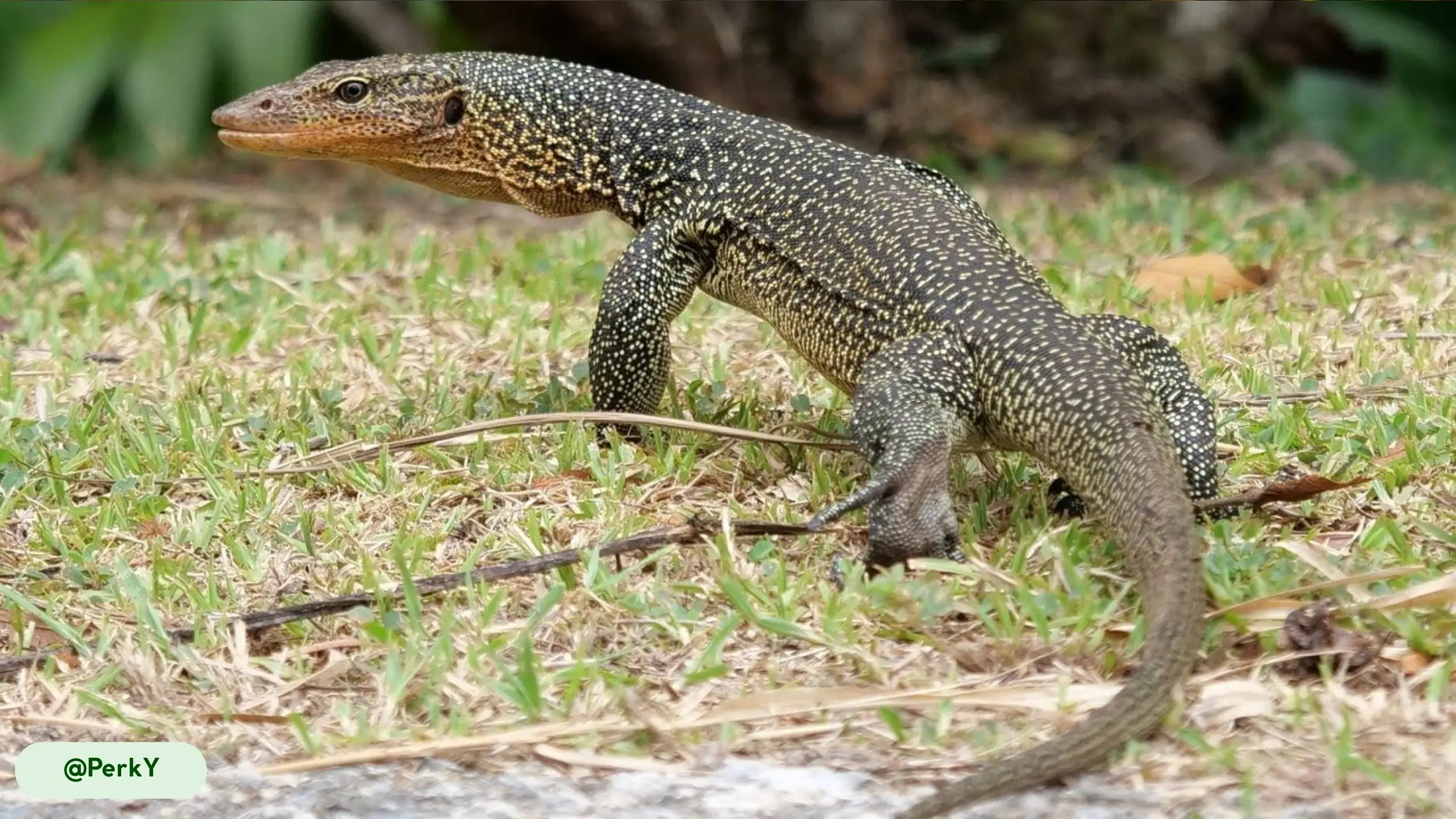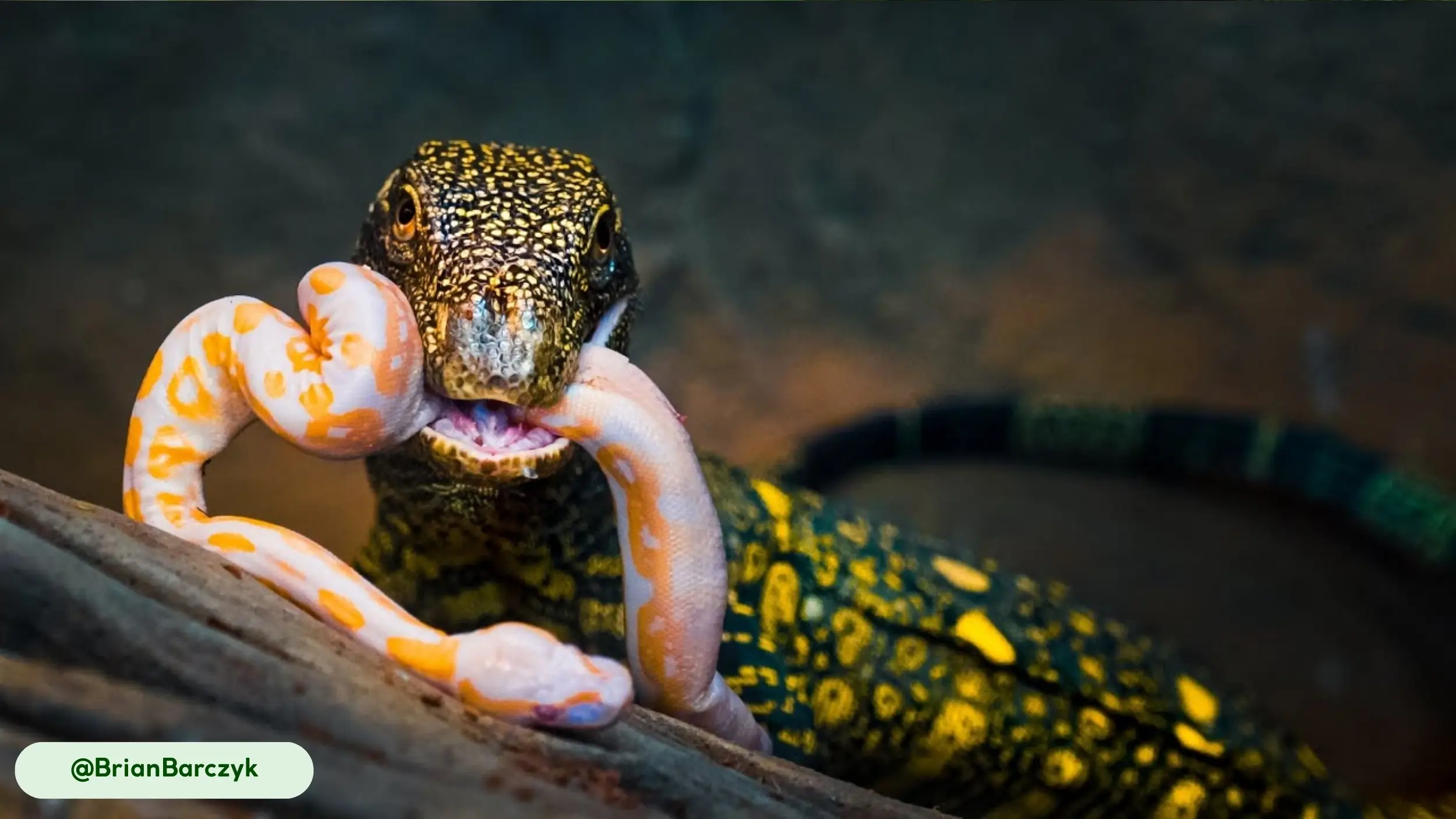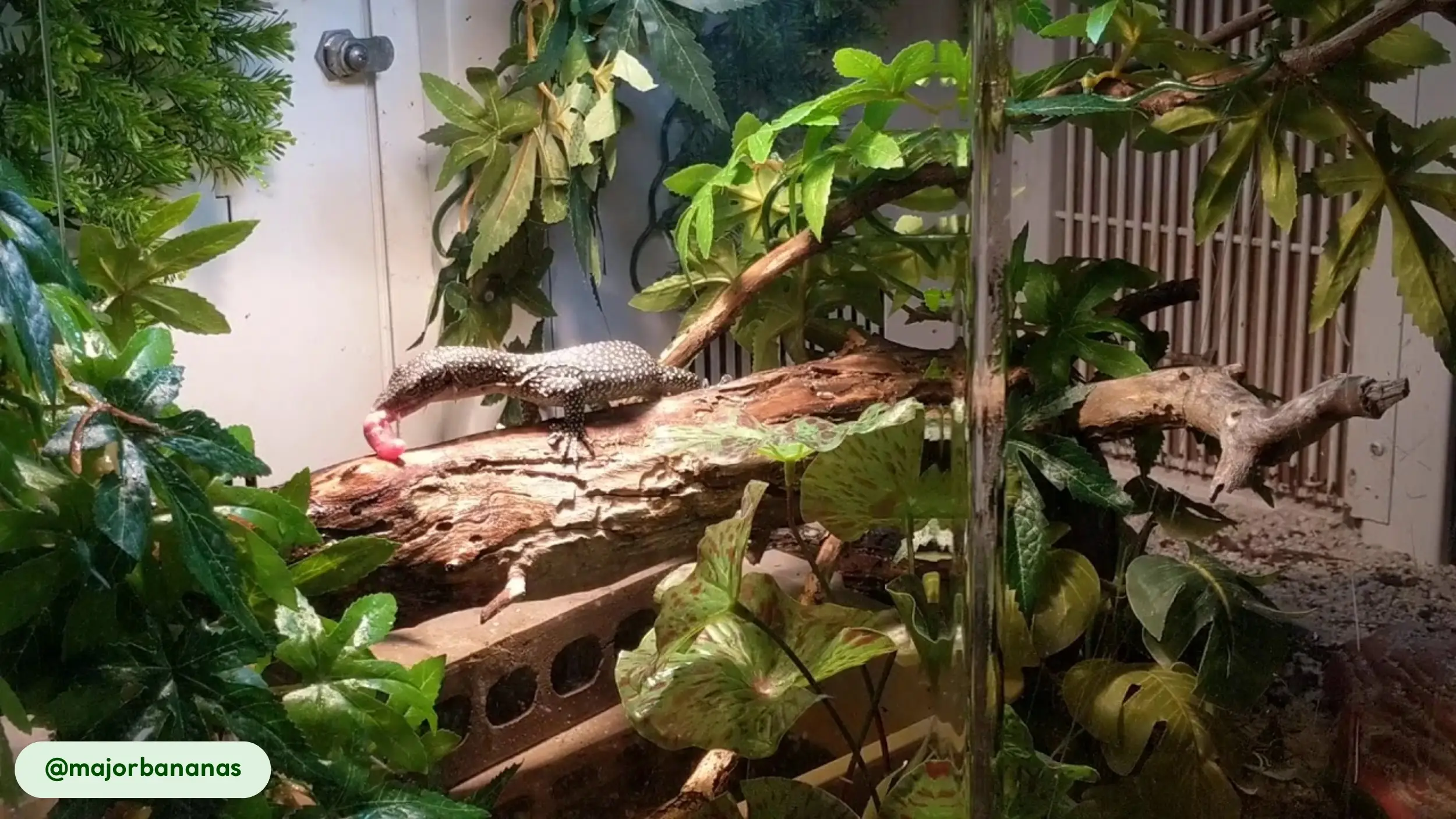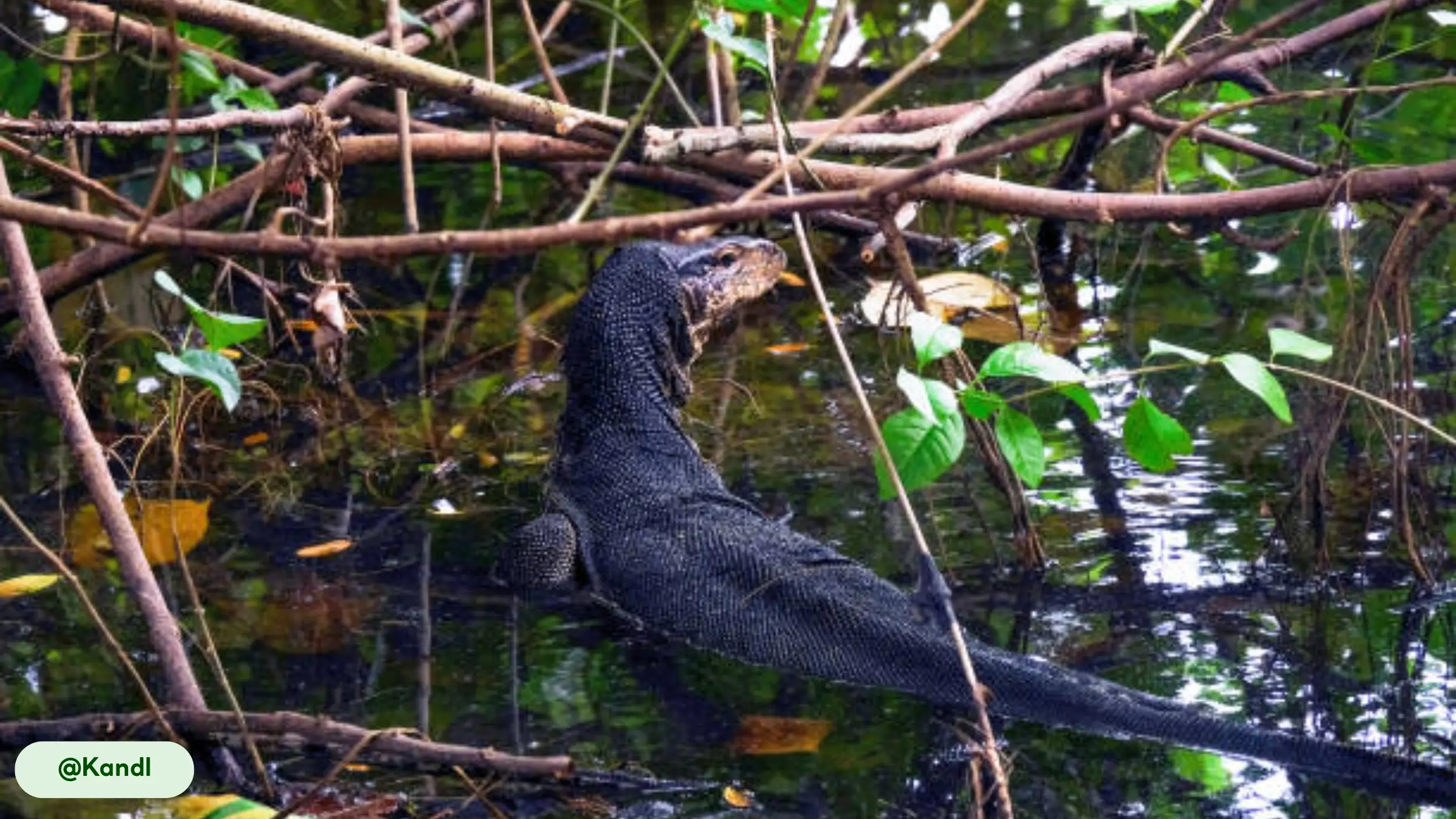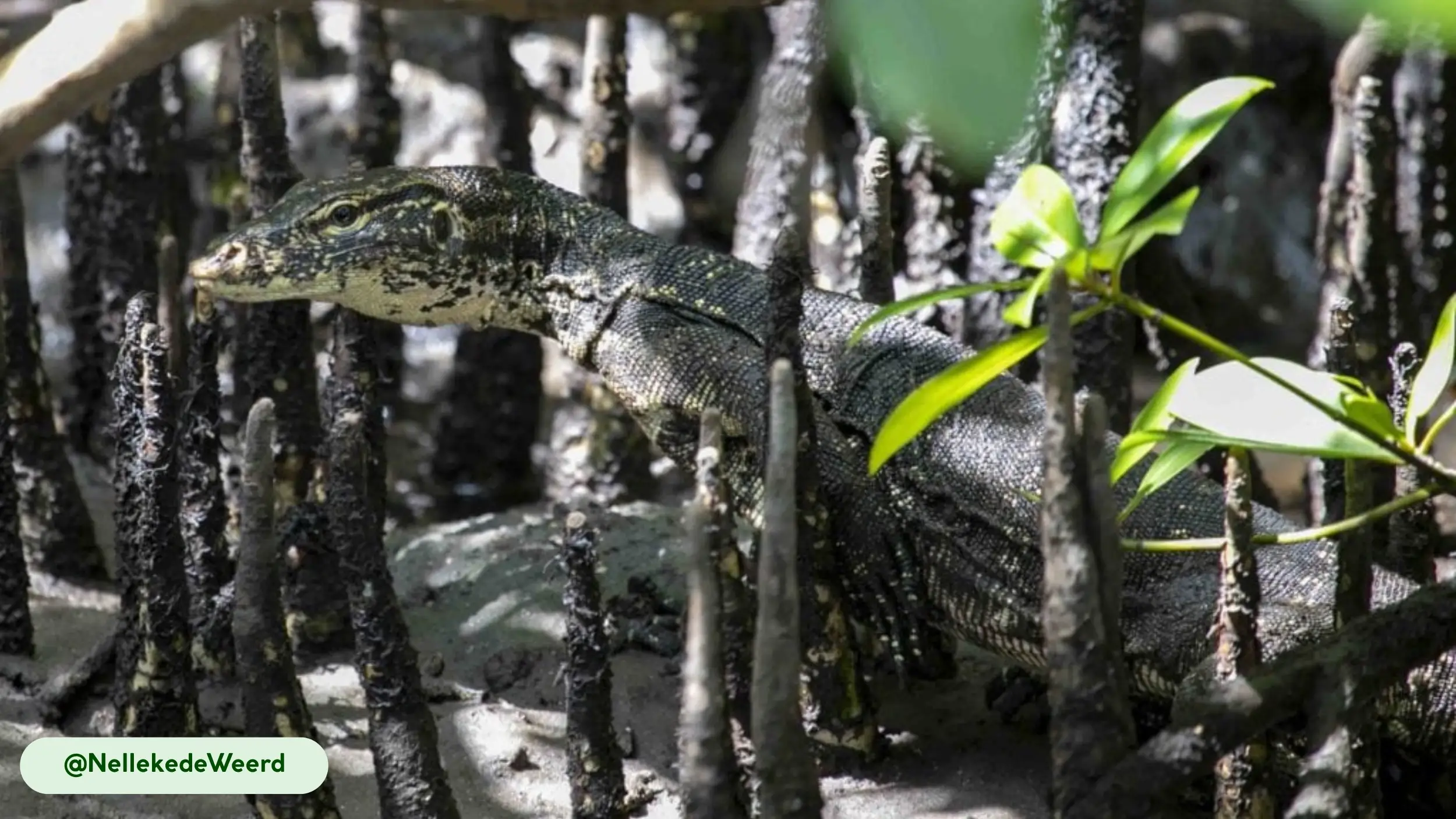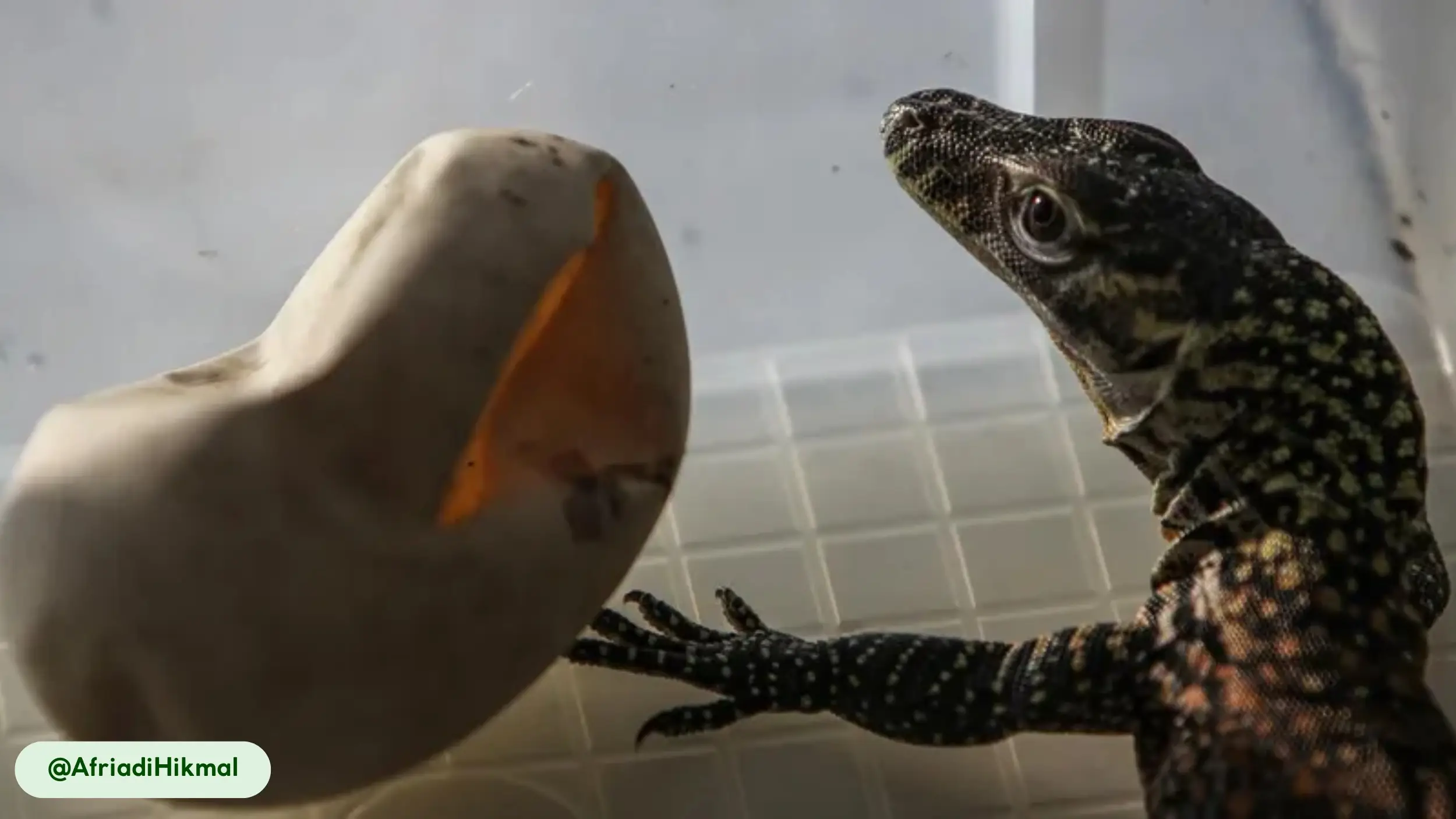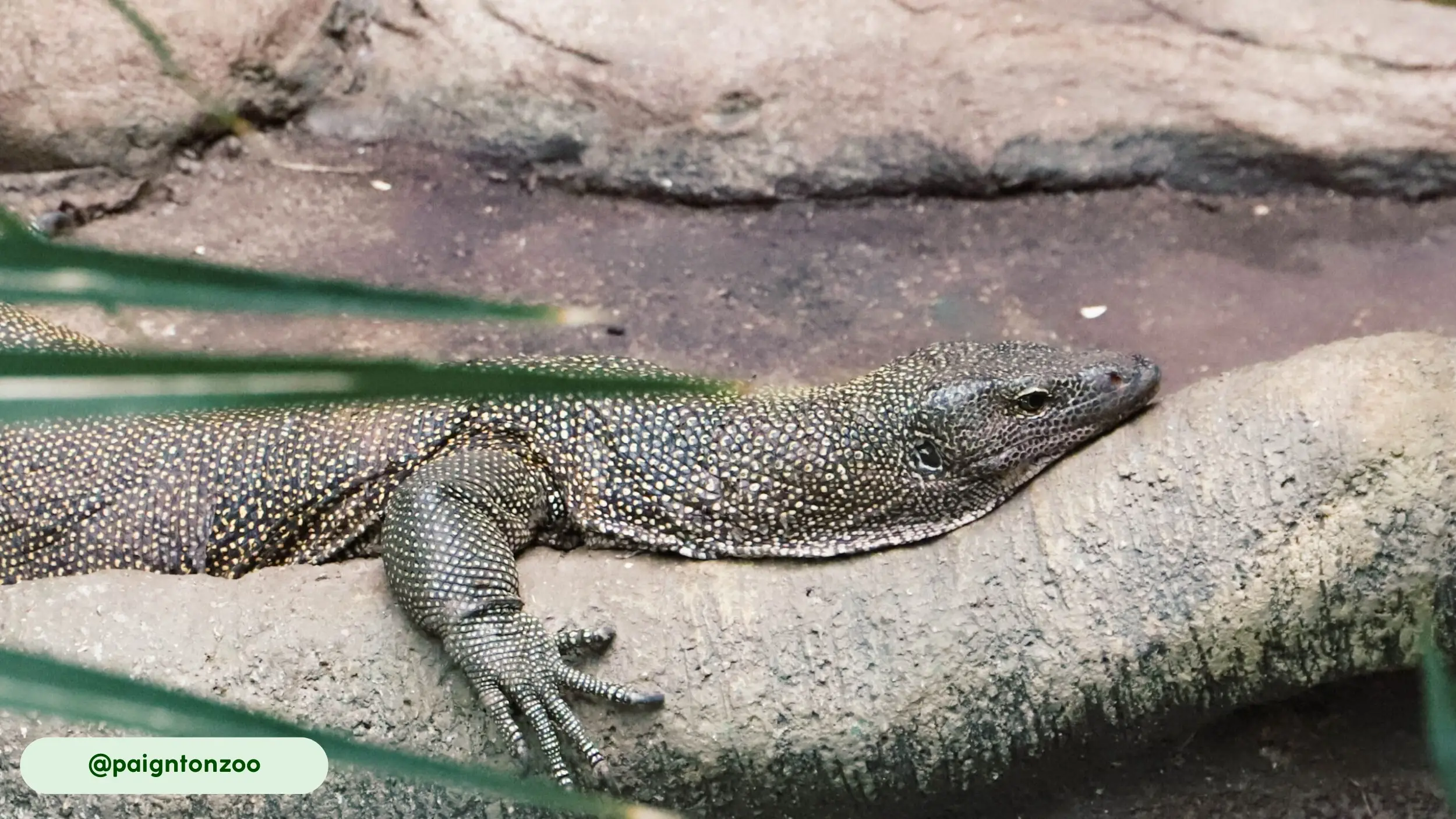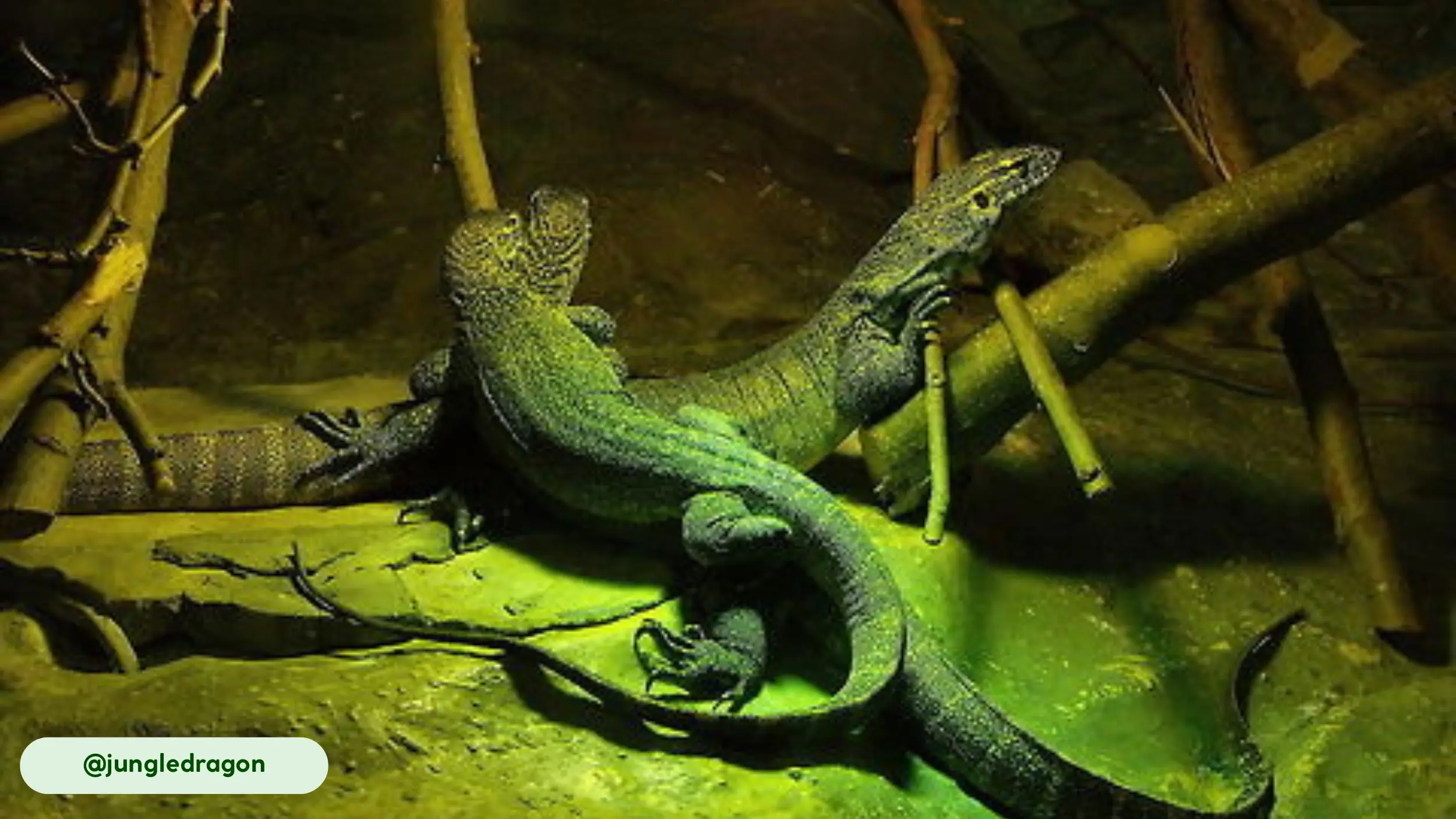The Mangrove Monitor (Varanus indicus) is a versatile reptile belonging to the monitor lizard genus, thriving in the intricate ecosystems of tropical mangrove forests and coastal regions. These large, predatory lizards, often averaging 3.3–3.9 feet (1–1.2 m) in length and weighing 1.1–4.2 pounds (0.5–1.9 kg), demonstrate exceptional adaptability across terrestrial, arboreal, and semi-aquatic environments (14, 2). Their distribution spans Indonesia, New Guinea, northern Australia, and numerous Pacific islands, where they serve as opportunistic carnivores consuming crabs, birds, and insects (14, 7). Displaying active pursuit hunting behaviors and possessing unique salt-excreting nasal glands, these monitors can navigate saline environments with proficiency, often swimming several hundred meters (14, 11). While classified as Least Concern on the IUCN Red List, habitat degradation and the pet trade impact their populations (14, 15).
This guide illuminates the Mangrove Monitor’s scientific identity, physical attributes, intricate behaviors, ecological contributions, and interactions with human populations. We will examine its unique semi-aquatic adaptations, including its specialized salt tolerance mechanisms, alongside its habitat requirements and daily patterns. Further investigation will cover its role as a predator and its conservation standing, providing a clear overview of this adaptable reptile. This sets the stage for a detailed exploration of its characteristics.

What Is Mangrove Monitor?
The Mangrove Monitor (Varanus indicus) defines a species of adaptable, semi-aquatic monitor lizard widely distributed across the Western Pacific, known for its keen predatory instincts and capacity to inhabit brackish water environments (14, 15). These reptiles fall under the family Varanidae, within the order Squamata and class Reptilia, signifying their place among scaled reptiles (14). Alternative common names for Varanus indicus include the Mangrove Goanna, particularly in Australia and Papua New Guinea, and the Western Pacific Monitor Lizard, reflecting its broad island distribution (14, 1). The species was first documented by Daudin in 1802 (14).
Taxonomic studies continue to refine our understanding of the V. indicus species complex, with recent genetic and morphological analyses indicating populations in Micronesia and other Pacific regions may constitute distinct endemic species, such as Varanus bennetti and Varanus tsukamotoi (15, 16). This ongoing research challenges traditional classifications, suggesting the group’s diversity has been underestimated and impacting conservation strategies by re-evaluating their native versus introduced status on various islands (15). For example, some island populations, previously considered introduced, are now argued to be native, underscoring the complexities of species definition and the implications for management plans (15). This species is a compelling subject for examining reptilian morphology and its environmental responses.
Beyond its scientific classification, the Mangrove Monitor showcases a remarkable physical presence in its natural habitat. The next section will reveal the distinctive appearance of this reptile, highlighting its unique adaptations and striking coloration.
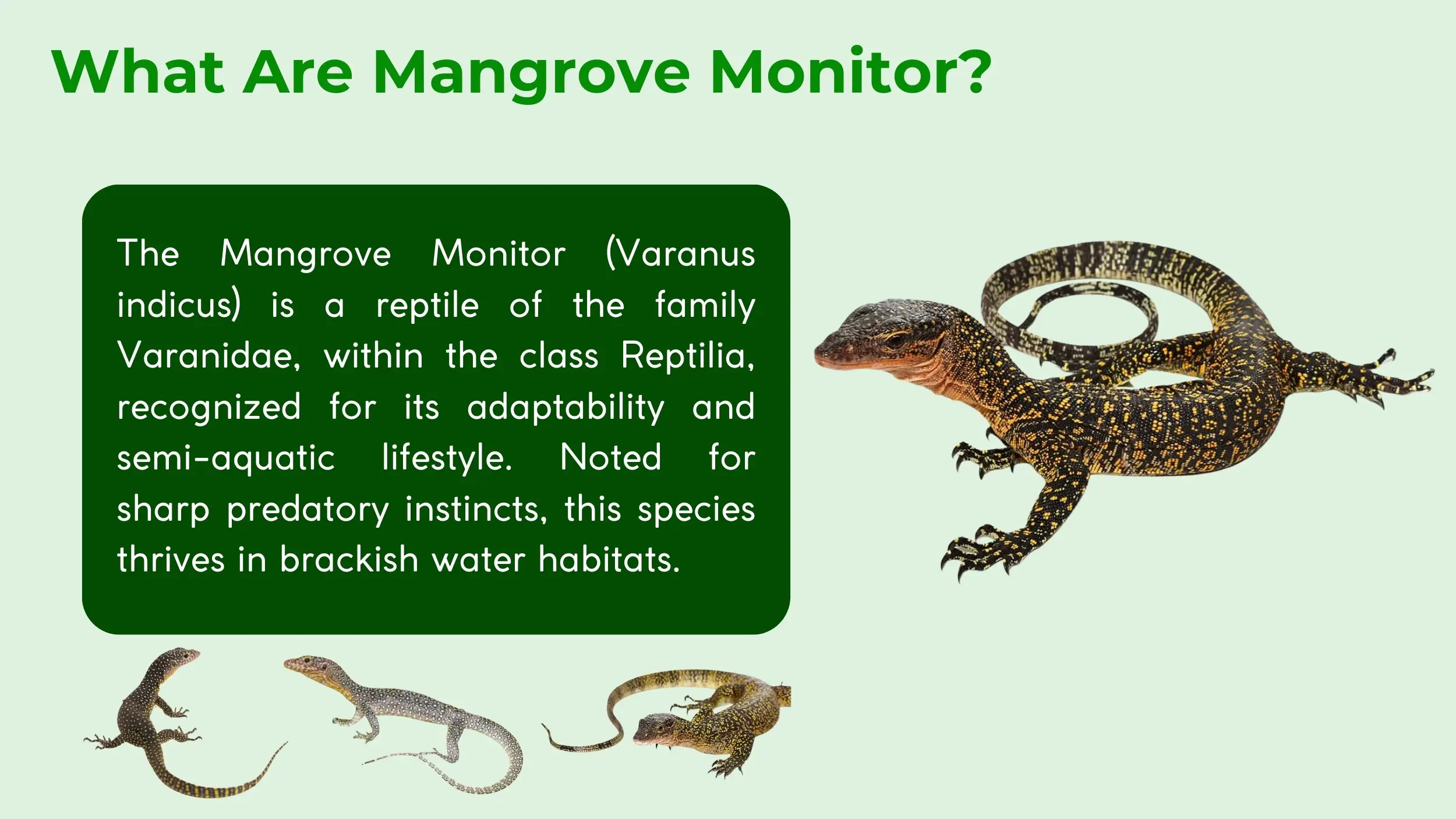
What Does Mangrove Monitor Look Like?
The Mangrove Monitor presents a robust yet slender physique, displaying adaptations for diverse environments including terrestrial, arboreal, and semi-aquatic habitats (14, 1). Its skin features rough, overlapping scales, forming a dark green or black dorsal coloration, punctuated by striking golden-yellow spots that create irregular rows along its back and sides (14, 13). This spotted patterning offers effective camouflage amidst mangrove foliage and leaf litter (13). The belly contrasts with a cream color, lacking markings, while the head typically appears lighter (14). The coarse, scaly texture provides protection against abrasion during active movements such as digging and climbing, offering a degree of camouflage in humid, vegetated settings (13).
This reptile possesses numerous distinctive physical traits. Key characteristics include a flattened head, specialized salt glands, a deeply forked tongue, serrated teeth, powerful limbs, and a compressed tail (14, 11). These features collectively enable its survival across diverse environments, from scaling trees to navigating water bodies.
Distinctive features of the Mangrove Monitor are:
- Elongated Head: The head is long, narrow, and slightly flattened, connected to a flexible neck which allows for an extensive range of motion (14).
- Adaptable Eyes: Medium-sized, dark irises and round pupils are positioned for forward vision, exhibiting good low-light adaptation for crepuscular activity (14, 1).
- Specialized Nostrils: Small, slit-like, dark-colored nostrils located at the snout tip house unique salt-excreting nasal glands, crucial for regulating salt intake from marine prey and brackish environments (14, 11).
- Chemosensory Tongue: A deeply forked, dark purple tongue is used for chemosensory detection through the Jacobson’s organ, aiding in locating prey (14).
- Efficient Teeth: Possessing 40–60 serrated, conical teeth, with larger canines, its jaw is suited for tearing flesh and gripping prey, effectively puncturing and shredding meat from various vertebrates and invertebrates (14, 1).
- Powerful Limbs: Four strong limbs, each with five toes ending in sharp, curved claws, are adapted for digging burrows, climbing trees, and grasping prey, facilitating agile movement across different terrains (14, 13).
- Compressed Tail: The tail is long, nearly twice the body length (up to 2.6 feet or 80 cm), laterally compressed, and covered in small, oval, keeled scales; it functions as propulsion for swimming, a balance aid during climbing, and a defensive whip (14, 13).
Sexual dimorphism is evident in the Mangrove Monitor, with males generally larger and more robust than females (2, 8). Males often display broader heads and more pronounced spotting, while females tend to be slimmer with subtler coloration, an adaptation for egg-laying (2, 8).
Grasping its physical traits naturally prompts an exploration of its dimensions. These impressive reptiles exhibit significant variation in size throughout their lives. The next section examines the specific size and weight of the Mangrove Monitor across its different life stages and between sexes.
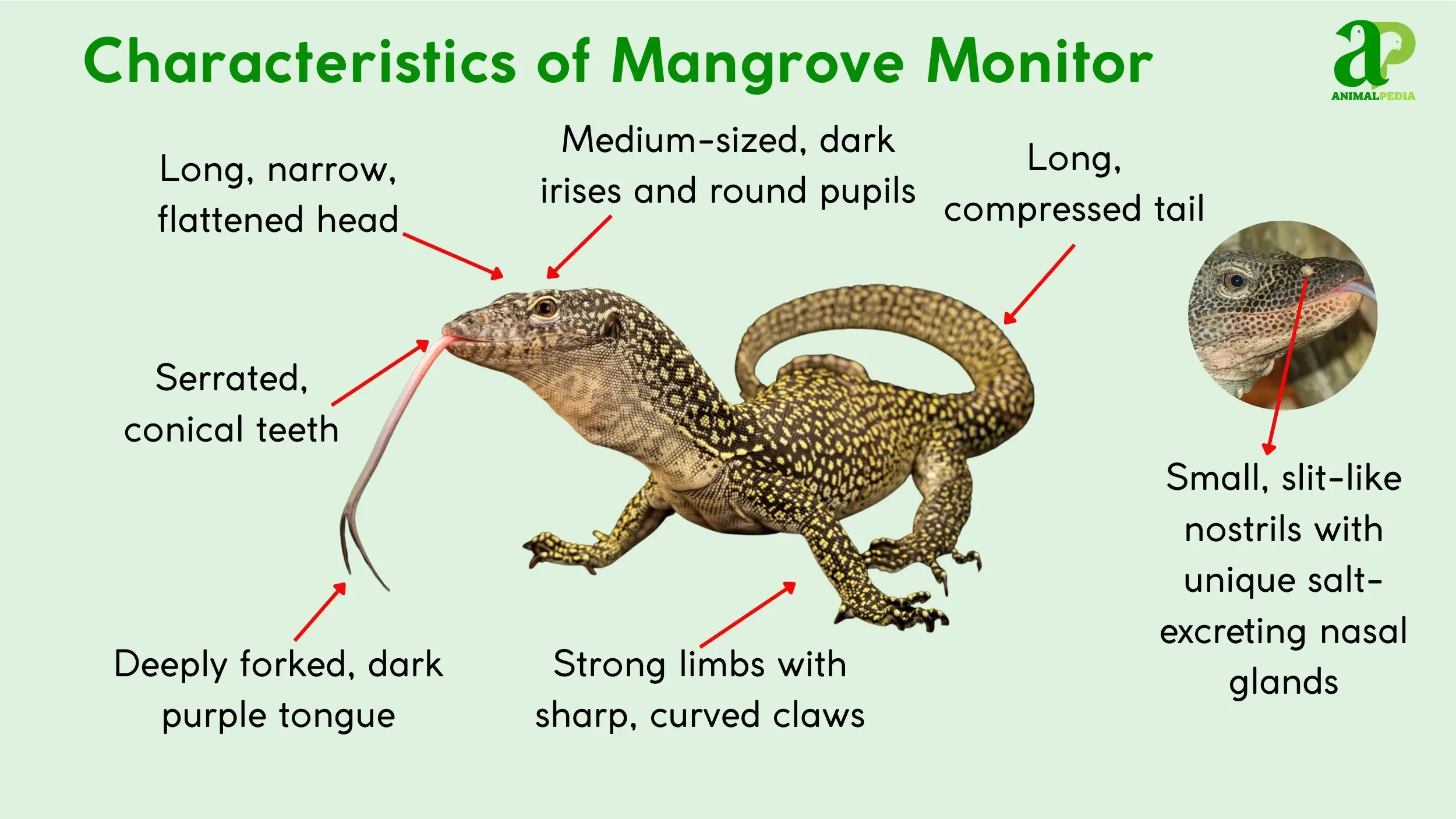
How Big is Mangrove Monitor?
Adult Mangrove Monitors typically reach a total length of 3.3–3.9 feet (100–120 cm) and weigh between 1.1–4.2 pounds (0.5–1.9 kg) (14, 2). The average male is larger, measuring around 3.9 feet (118 cm) and weighing 3.3 pounds (1.5 kg) (14, 2).
| Feature | Male | Female |
| Length | Up to 3.9 feet (118 cm) | Up to 3.5 feet (107 cm) |
| Weight | Up to 4.2 pounds (1.9 kg) | Up to 3.1 pounds (1.4 kg) |
Hatchlings are quite small, measuring about 8–10 inches (20–25 cm) in total length and weighing 0.1–0.2 pounds (50–100 g) (14). Juveniles grow to 2–3 feet (60–90 cm) and 1–2 pounds (0.5–1 kg) by 1–2 years (14). They reach sexual maturity at 1.5 years and attain full adult size by 3–4 years (2, 8). To visualize their size, an adult Mangrove Monitor can be as long as a child’s height.
With an understanding of its size, our attention naturally shifts to its living environment. Discovering where these monitors establish their homes reveals much about their survival strategies. The next section explores the habitat preferences and geographic distribution of the Mangrove Monitor.
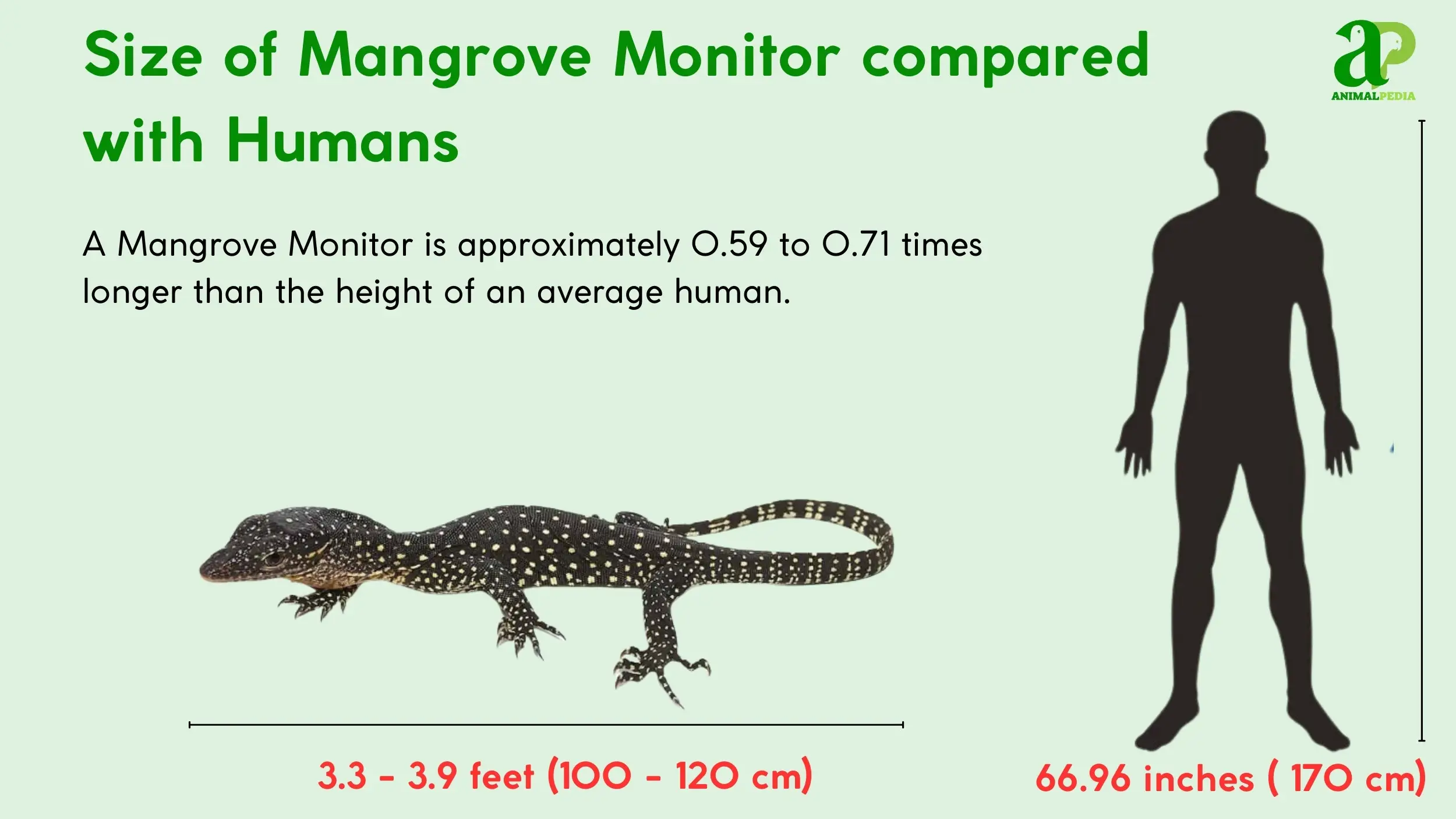
Where Does Mangrove Monitor Live?
The Mangrove Monitor primarily inhabits tropical mangrove forests, coastal rivers, damp inland lakes, and semi-aquatic swamps across its extensive range (14, 7). This species is native to regions including Indonesia (Moluccas islands such as Ambon, Seram, Buru), New Guinea, northern Australia, and the Solomon Islands (14, 15). It has also been introduced to various Pacific islands, including Guam and the Marshall Islands, and parts of Japan (14, 15).
These monitors require a tropical wet climate, with ambient temperatures ranging from 77–86°F (25–30°C) and high humidity levels between 70–90% (14, 6). They depend on permanent water sources and avoid prolonged dry periods (14, 6). The Mangrove Monitor maintains a highly territorial nature, often defending home ranges up to 100 acres (40 ha) (14, 7). These territories are typically marked using scent from feces and gland secretions, with individuals remaining solitary except during mating seasons (14, 7).
Having detailed its habitat, our focus now moves to the actions defining its life. The Mangrove Monitor exhibits a range of behaviors crucial for its survival and interaction within its ecosystem. The subsequent section will elaborate on its complex behavioral patterns.
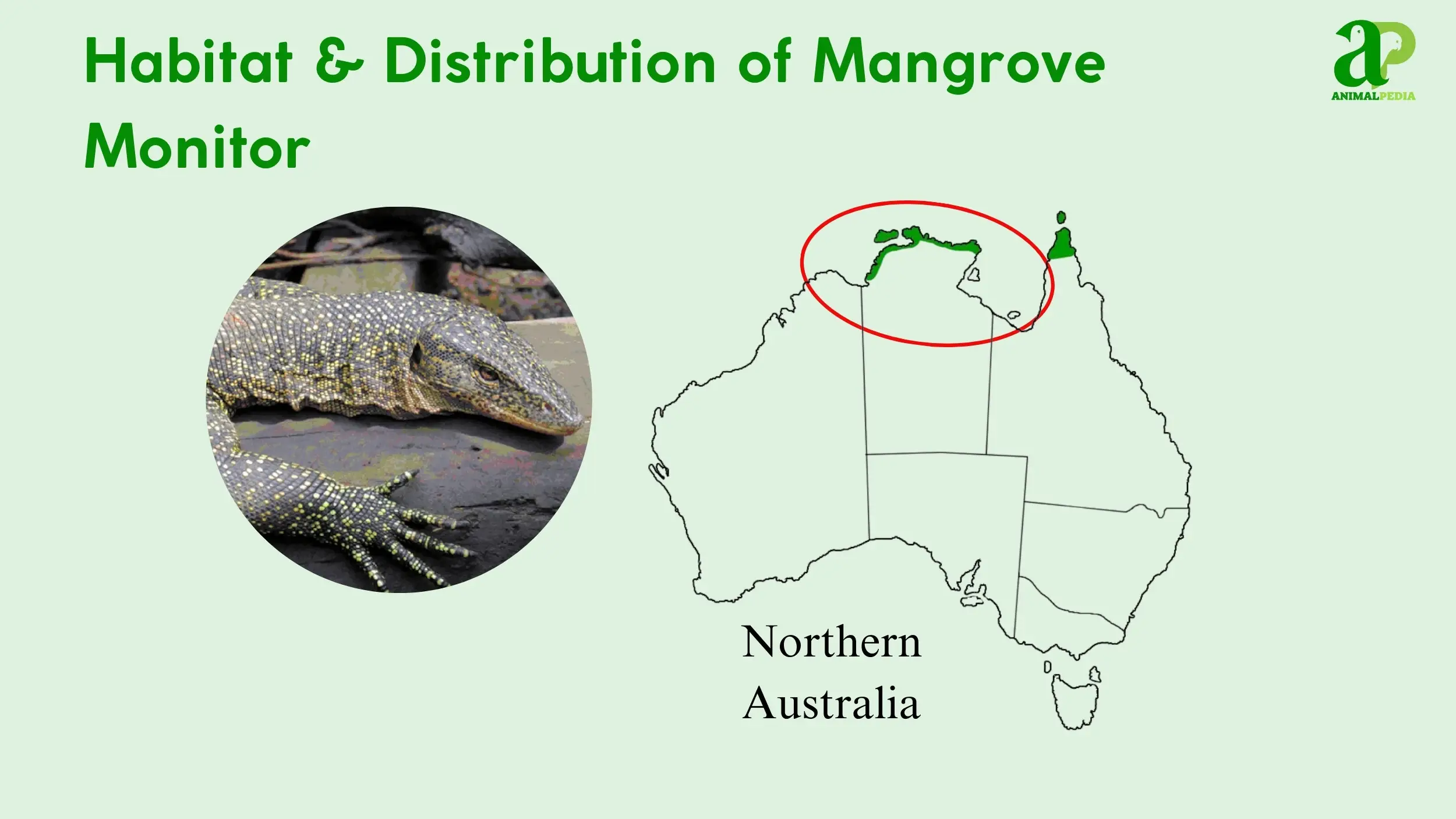
How Does Mangrove Monitor Behave?
The Mangrove Monitor exhibits a dynamic array of behaviors, characterized by its opportunistic predation, agile movement across various terrains, and specific daily and seasonal activity patterns (14, 1). These behaviors reflect its adaptability as a generalist predator within diverse tropical and semi-aquatic environments.
- Diet and Feeding: As opportunistic carnivores, Mangrove Monitors actively hunt and scavenge for a wide range of prey, primarily crabs, birds, and insects (7).
- Movement and Abilities: They are adept at terrestrial locomotion, arboreal climbing, and powerful swimming, utilizing their robust limbs and compressed tail for agile navigation (14, 1).
- Daily/Seasonal Patterns: Mangrove Monitors are typically most active during daylight hours, often exhibiting crepuscular activity, and their reproductive behaviors are linked to seasonal rainfall (14, 1, 9).
This comprehensive overview delves into the specifics of their feeding strategies, remarkable mobility, and characteristic activity cycles. Our next exploration centers on its diet, dissecting what the Mangrove Monitor consumes and its methods of acquiring food.
Diet and Feeding
The Mangrove Monitor primarily consumes crabs, classifying it as an opportunistic carnivore (7, 14). Crabs constitute a substantial portion of its diet, ranging from 20–86% by volume in some habitats, supplemented by birds and their eggs at approximately 26.5% importance (7). Secondary food sources include insects such as beetles (10–20%), rodents and small mammals (5–10%), fish, mollusks, and carrion (7).
Mangrove Monitors employ an active pursuit hunting strategy, utilizing their deeply forked tongue for sophisticated scent tracking via the Jacobson’s organ (14, 7). They forage by digging in soft substrates or climbing trees, often ambushing prey near water (14, 7). A notable adaptation allows them to catch fish by actively diving into deep water, using their laterally compressed tail for propulsion (7). Their feeding patterns are flexible, adapting to the availability of prey within their habitat (7).
Considering its predatory lifestyle, understanding its defensive capabilities becomes important. The Mangrove Monitor possesses a unique defense mechanism that warrants careful attention. The following section addresses its venom status and associated risks.
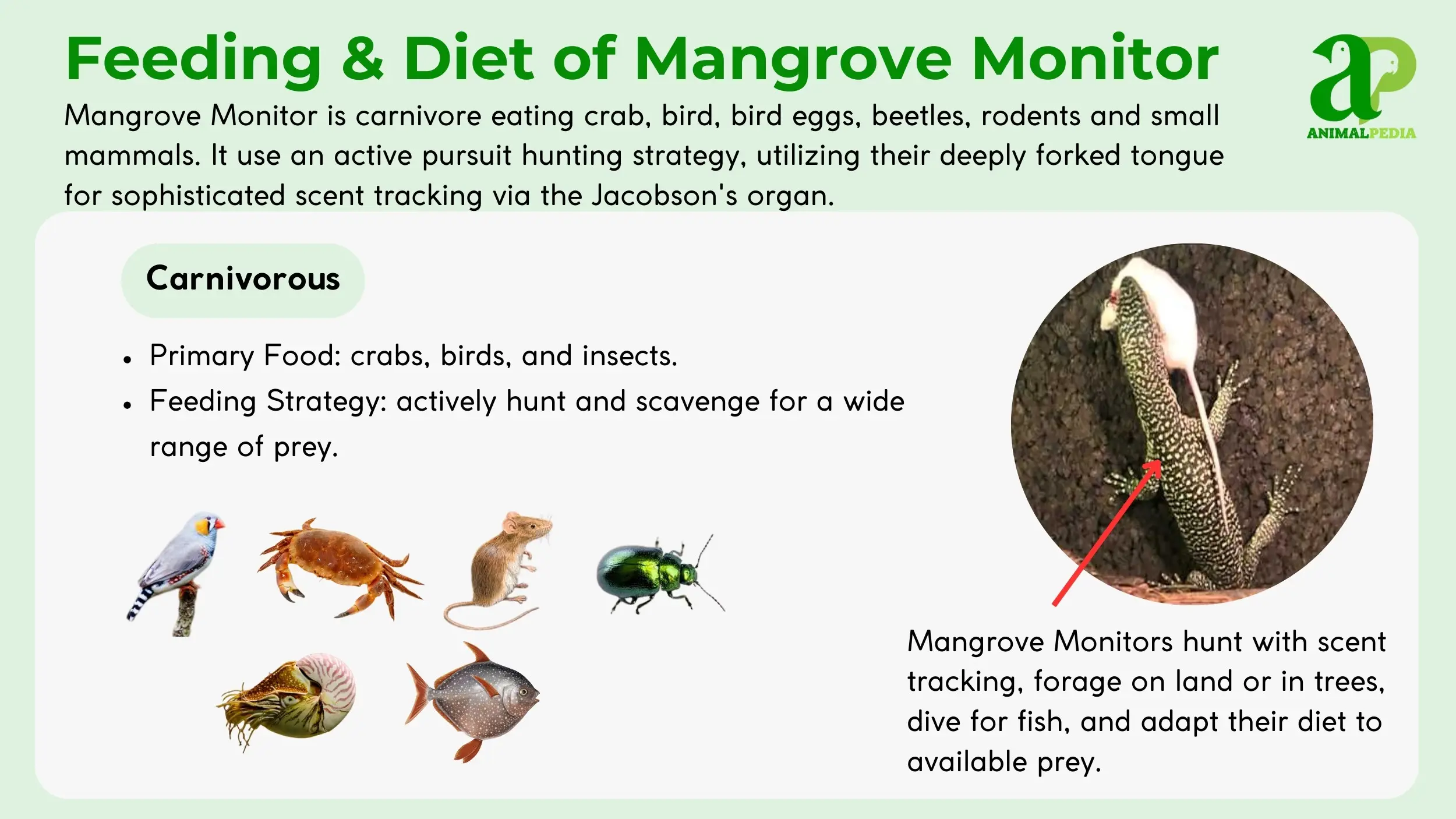
Is Mangrove Monitor Venomous?
The Mangrove Monitor is venomous, possessing a mild venom delivered through its saliva during bites (14). Scientific research has identified the presence of mildly anticoagulant properties in its saliva, which can induce swelling and pain in bite victims (14). While generally avoiding human interaction, the Mangrove Monitor can become aggressive if cornered or during feeding (14, 7).
A bite from a Mangrove Monitor can cause deep punctures and tearing wounds, carrying a risk of secondary bacterial infections from the oral flora (14). The mild venom may lead to localized swelling, prolonged bleeding, or nausea, though fatalities are rare (14). Scratches from their sharp claws can also result in significant lacerations. In the event of an encounter, immediate first aid includes thoroughly washing the wound with soap and water, applying pressure to control bleeding, using an antiseptic, and seeking prompt medical attention for any signs of infection (redness, pus) or severe swelling (14, 1). Antibiotics and tetanus shots may be necessary, and monitoring for allergic reactions is also advised (14, 1). When threatened, these monitors may also display aggressive behaviors such as tail whipping, hissing, inflating their body, or releasing foul-smelling cloacal secretions (14, 7).
Beyond its diet and defensive traits, the Mangrove Monitor demonstrates remarkable agility in traversing its complex environment. Its movement capabilities and specialized physical attributes allow it to thrive across land, trees, and water. The next section will explore these impressive adaptations.
Movement and Abilities
The Mangrove Monitor is a highly agile reptile, moving with remarkable proficiency across terrestrial, arboreal, and semi-aquatic environments (14, 1). Its versatile locomotion is supported by strong limbs and a powerful tail.
- Terrestrial Movement: They navigate the ground through walking and running, capable of considerable speed.
- Arboreal Movement: These monitors are semi-arboreal climbers, often ascending trees over 30 feet (10 m) using their sharp claws (14, 1).
- Semi-Aquatic Movement: They are competent swimmers, using their laterally compressed tail for propulsion (14, 13).
The Mangrove Monitor can run at speeds up to 10–15 miles per hour (16–24 km/h) over short distances, up to 100 feet (30 m) (14). For sustained periods, they can swim at 2–3 miles per hour (3–5 km/h) for several hundred meters (14). Unique specialized traits include their nasal salt glands, allowing them to secrete excess salt and thrive in saline environments (14, 11). A flexible hyoid apparatus enables mouth expansion, facilitating the swallowing of prey larger than their head (14). They are also one of the few monitor species known to actively hunt fish by diving into deep water (7). Their physical capabilities are further enhanced by muscular limbs for powerful movements and a strong tail that serves for balance, propulsion, and defense (14, 13).
After observing its impressive movements, we can now appreciate how these translate into its daily and seasonal rhythms. The Mangrove Monitor’s activity patterns are finely tuned to its environment. The following section examines the daily and seasonal patterns that govern this reptile’s life.
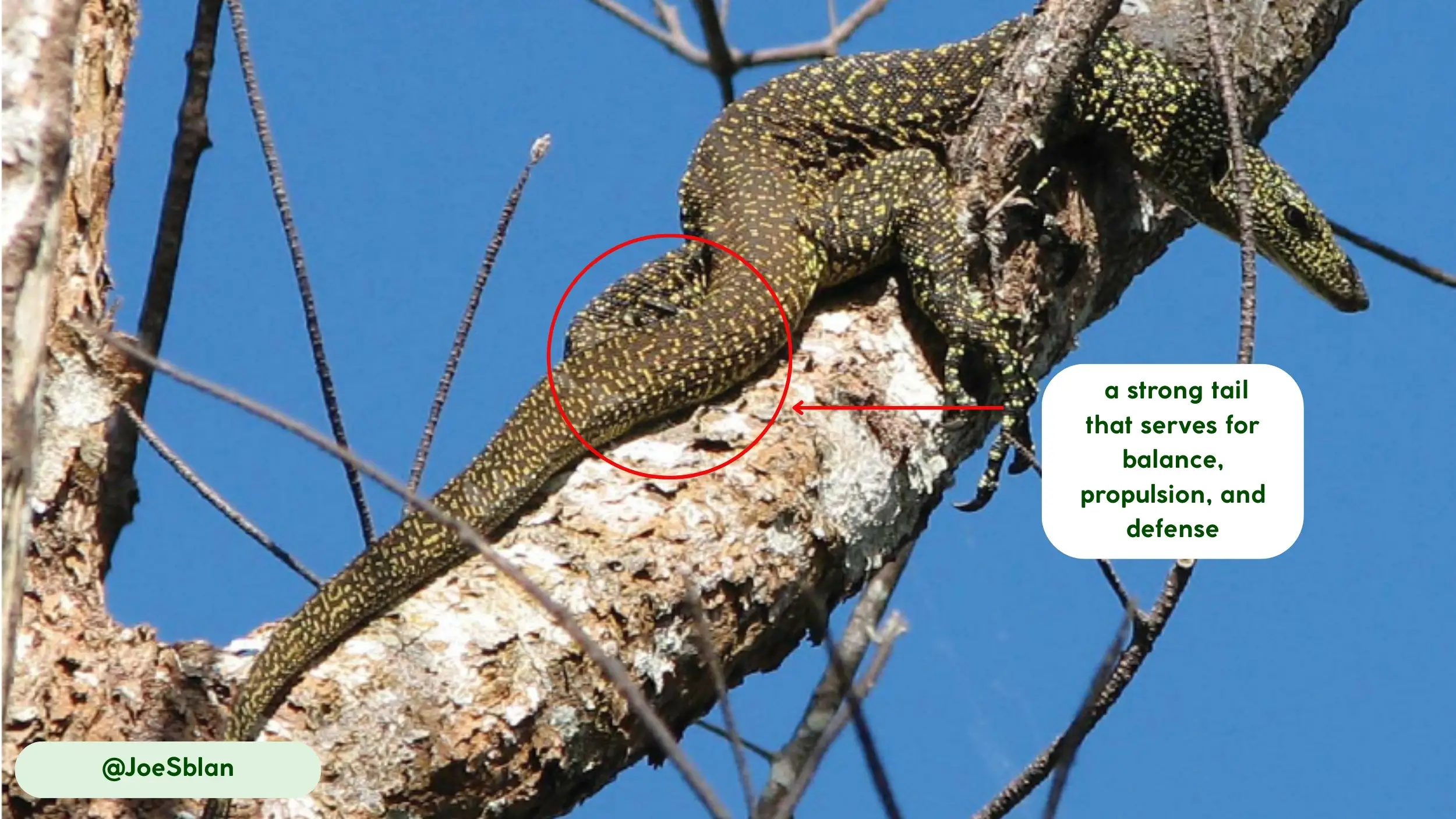
Daily/Seasonal Patterns
The Mangrove Monitor is primarily active during the day, exhibiting a diurnal activity cycle, though it can also show crepuscular activity (active during twilight hours), particularly when foraging (14, 1).
Its daily activity cycle typically includes:
- Morning (approx. 6:00 AM – 9:00 AM): Emergence from overnight retreats, basking to raise body temperature, and initial foraging.
- Midday (approx. 9:00 AM – 4:00 PM): Active hunting, patrolling territory, and exploring new areas for food.
- Late Afternoon/Evening (approx. 4:00 PM – 7:00 PM): Continued foraging, seeking basking spots before sunset, and retreating to shelters for the night.
The Mangrove Monitor shows increased activity during the rainy season, which correlates with mating behaviors and enhanced prey availability (14, 9). This period provides optimal conditions for reproduction and growth, as environmental resources are more abundant (14, 9). There is no documented evidence of significant migratory patterns for Varanus indicus; individuals typically remain within their established home ranges, adapting to local conditions throughout the year (14).
Transitioning from its daily rhythms, we now consider the perpetuation of the species. The Mangrove Monitor employs specific reproductive strategies to ensure its survival. The next section will detail its fascinating reproductive behaviors and life cycle.
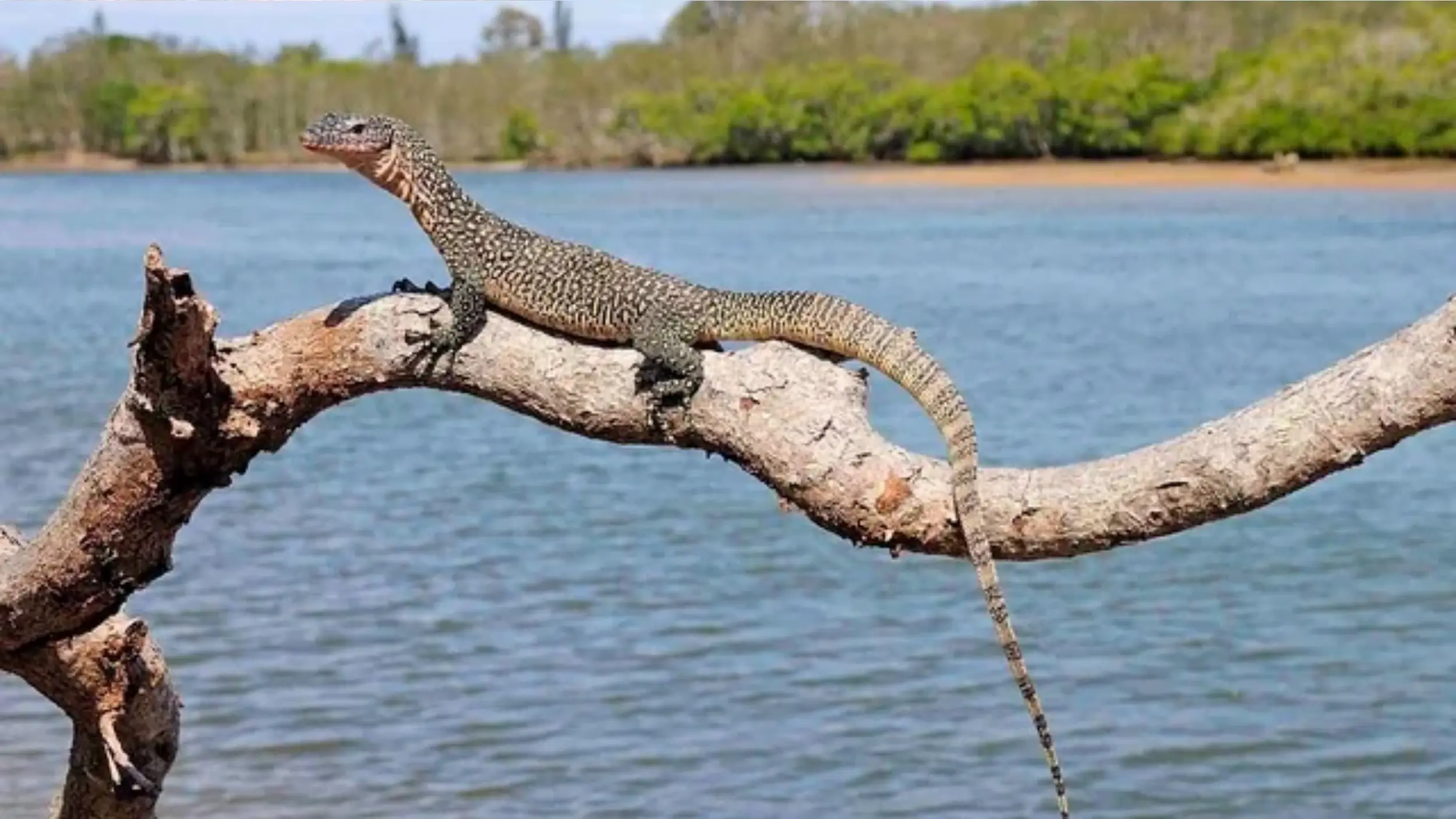
How Does Mangrove Monitor Reproduce?
The Mangrove Monitor reproduces via oviparity, meaning it lays eggs (14, 9). Females typically produce a clutch of 2–12 eggs (14, 9). Mating behaviors are seasonal, primarily occurring during the rainy period when environmental conditions are favorable (14, 9). During this time, males often engage in competitive fights with rivals, employing bites and tail whips to assert dominance (14). Courtship rituals involve the male rubbing his chin against the female’s head while mounted, sometimes rotating in circles (14).
Following successful mating, the gestation and incubation period for the eggs lasts approximately 7–8 months, or about 180 days, at a temperature of 82°F (28°C) (9). The eggs are characteristically white and oblong, measuring between 1.4–2 inches (3.5–5 cm) in length (9). There is no observed diapause, a period of suspended development, in their egg incubation (9). Upon hatching, the young emerge fully formed but are vulnerable, exhibiting rapid initial growth that accelerates significantly after approximately 50 days (14). Mangrove Monitors do not exhibit any form of parental care; females may guard the eggs briefly after laying but subsequently abandon the nest, leaving the hatchlings to be entirely independent (14, 9). Notably, cases of parthenogenesis, or virgin birth, have been documented in captive Mangrove Monitors, where eggs hatched without male fertilization (9).
Grasping its reproductive cycle naturally leads to inquiries about its longevity. The Mangrove Monitor has a notable lifespan, influenced by various environmental and biological factors. The next section will explore how long it lives in both the wild and in controlled environments.
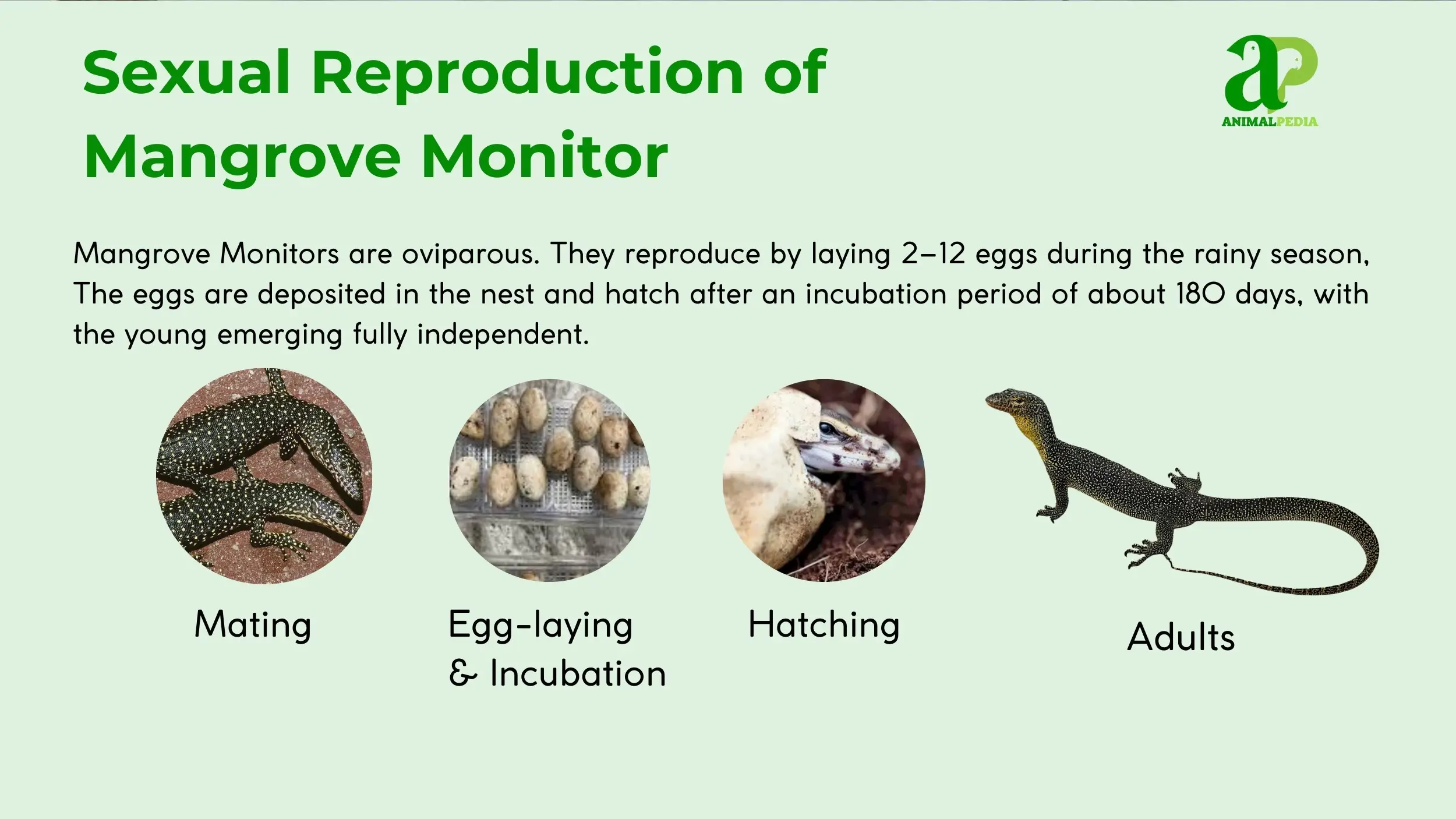
How Long Does Mangrove Monitor Live?
Mangrove Monitors live approximately 8–15 years on average in the wild, with some individuals reaching up to 20 years (14, 12). In captivity, with optimal care and controlled environments, their lifespan extends considerably, averaging 15–20 years and potentially reaching up to 30 years (12).
They typically reach sexual maturity around 1.5 years of age, with full adult size attained by 3–4 years (2, 8). Several factors influence their longevity. A diet rich in essential nutrients directly impacts their health and lifespan, while stable habitats free from degradation contribute to their survival (7, 6). Conversely, predation by birds of prey, larger monitor lizards, pythons, and humans can shorten their lives (14, 6). Disease, including parasitic infections such as nematodes or bacterial infections resulting from injuries, also plays a role in reducing their lifespan (7, 6).
As we learn about its life cycle, we also consider its impact on the broader world. The Mangrove Monitor interacts with human populations in multifaceted ways, presenting both advantages and potential challenges. The following section examines this complex relationship.

Is Mangrove Monitor Beneficial to Humans?
The Mangrove Monitor presents a complex relationship with humans, offering both benefits and challenges (7, 6). While generally avoiding direct human interaction, its opportunistic nature can lead to conflicts (14, 7).
This species is beneficial to humans in several ways: it serves as pest control by preying on rodents and insects that can harm agriculture or spread disease (7, 6). In some local cultures, it is utilized as a food source, and its organs are traditionally (though unsubstantiated by scientific evidence) used in traditional medicine (14, 6). The monitor is also a popular reptile in the pet trade, particularly for experienced keepers, contributing to ecotourism by drawing wildlife enthusiasts to mangrove viewing areas (14, 6). In Pacific Islander folklore, these monitors are associated with adaptability, sometimes linked to ancient voyagers who may have introduced them for rat control, and they appear in Papua New Guinean art as guardians of waterways (4, 6). However, they can raid poultry farms, causing damage to agricultural interests, and invasive populations on islands threaten native biodiversity (7, 6).
After considering its interactions with humans, a critical question emerges regarding its ecological standing. Is the Mangrove Monitor currently facing threats to its existence? The next section addresses its conservation status and the ongoing efforts to protect this unique species.
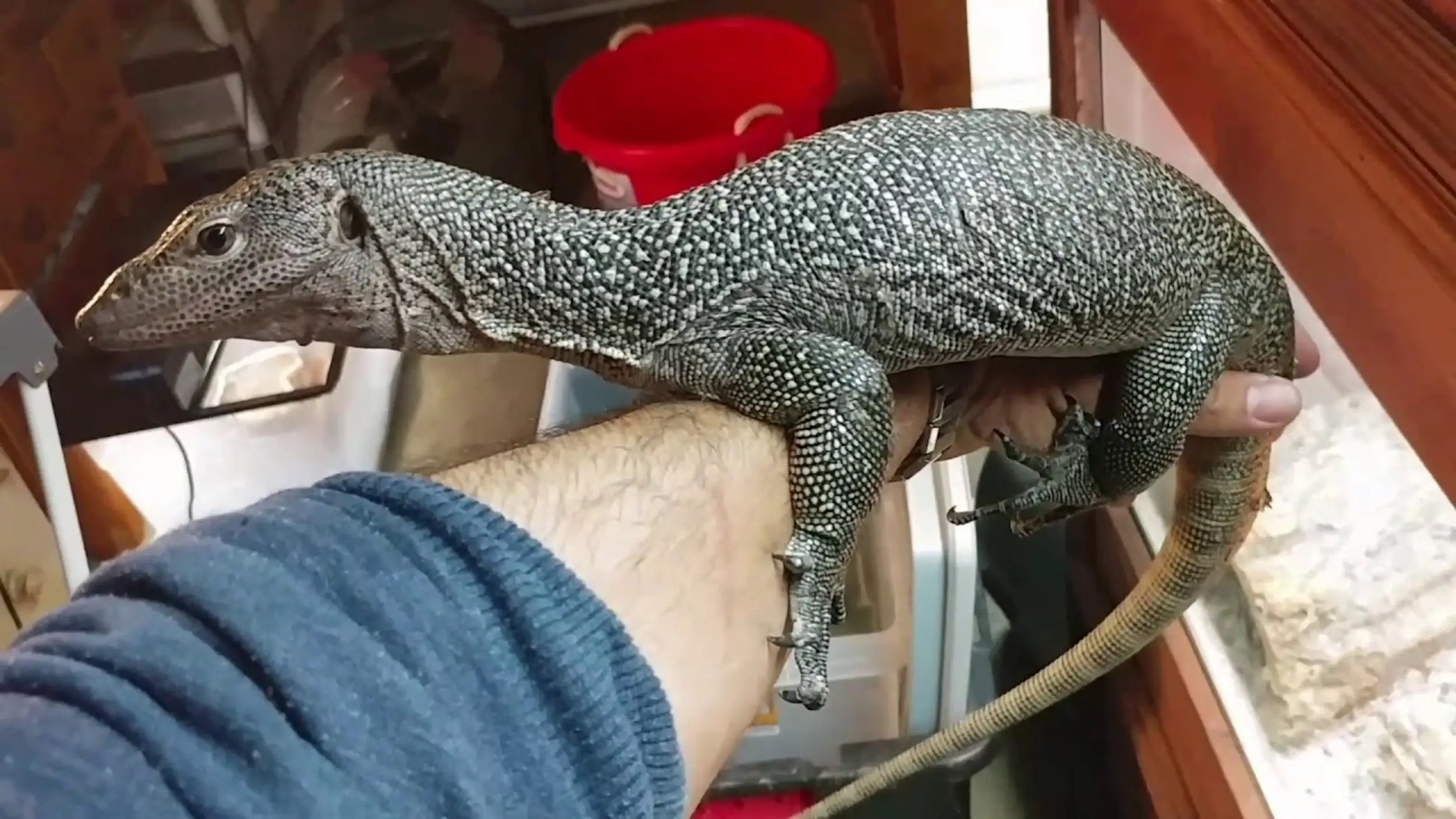
Is Mangrove Monitor Endangered?
The Mangrove Monitor is currently classified as Least Concern on the IUCN Red List (14, 15). This assessment was made in 2017, with no major updates reported by 2025 (14, 15). Despite this status, several threats impact their populations. The primary threats include habitat destruction resulting from logging and coastal development, hunting for their skins and meat, and overexploitation for the international pet trade (15, 6).
The Mangrove Monitor plays an important ecological role as a top predator in its native ecosystems, contributing to pest control by preying on crabs, rats, and insects (7, 6). It also serves as a prey item for larger predators and acts as a biological indicator of healthy mangrove environments (7, 6). Conservation actions include its listing on CITES Appendix II, which regulates international trade, and protection under national laws in Indonesia (15, 6). Monitoring programs are in place for invasive populations on Pacific islands, and successful breeding programs exist in zoos, such as the Philadelphia Zoo (15, 6). Proposed actions also involve habitat protection in regions like the Moluccas (6).
Beyond its conservation status, the Mangrove Monitor holds a wealth of intriguing details waiting to be uncovered. The following section unveils a collection of fascinating facts, highlighting its most extraordinary characteristics and unique adaptations.
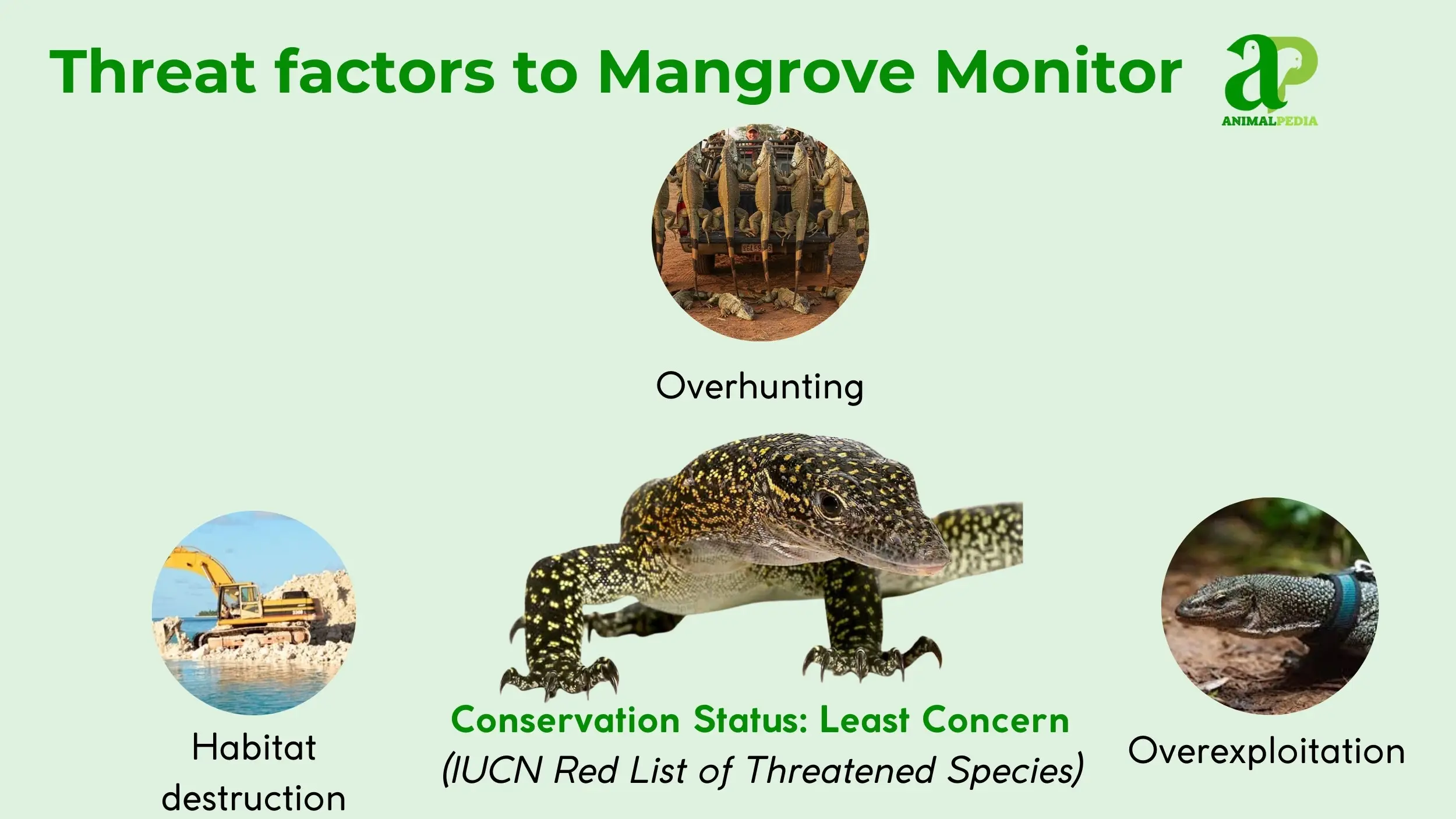
Frequently Asked Questions About Mangrove Monitor
Are Mangrove Monitors Good Pets?
Mangrove Monitors are generally not recommended as pets for beginners due to their substantial size, potentially aggressive nature, and specialized care requirements (14). They demand large enclosures (minimum 8x4x6 feet or 2.4×1.2×1.8 m) with specific environmental controls for temperature and humidity, necessitating a significant commitment from experienced reptile enthusiasts (14).
How Long Can A Mangrove Monitor Hold Its Breath?
The exact duration a Mangrove Monitor can hold its breath is not explicitly quantified in current scientific literature. However, its semi-aquatic lifestyle, including the ability to actively hunt fish by diving into deep water, indicates a notable physiological capacity for breath-holding during submerged activities (7, 14).
Do Mangrove Monitors Create Habitats For Other Species Through Their Activities?
While Mangrove Monitors are known to dig burrows for their own shelter and foraging, the provided information does not explicitly state that these activities create habitats for other species (14). Their primary ecological contribution in this context centers on their role as apex predators within their environment (7).
Are Mangrove Monitors Known To Prey On Young Crocodiles In Certain Regions?
Based on the available scientific data, there is no documented evidence suggesting that Mangrove Monitors prey on young crocodiles. Their established diet primarily comprises crabs, birds, insects, rodents, and small mammals, indicating their typical predatory scope (7).
How Do Mangrove Monitors Use Burrowing To Handle Extreme Weather?
Mangrove Monitors utilize burrowing as a primary strategy for shelter and protection (14). These excavated retreats offer a stable microclimate, providing effective refuge from environmental extremes such as intense heat, cold, or heavy rainfall, thus aiding in their survival (14, 6).
Having addressed common queries, we conclude our exploration of this unique reptile. The final section offers a summary and invites further discovery.
Conclusion
The Mangrove Monitor (Varanus indicus) stands as a testament to nature’s remarkable adaptability, showcasing a suite of unique physical and behavioral traits that enable its survival across diverse tropical environments. From its specialized salt glands to its agile movements across land, trees, and water, this monitor lizard plays a pivotal role in its ecosystems as an opportunistic carnivore. While classified as Least Concern, its future hinges on continued conservation efforts that address habitat degradation and the challenges posed by human interaction. Animal Pedia strives to deliver scientifically accurate, engaging content that fosters a deeper understanding of animal life. We hope this comprehensive guide has enriched your knowledge of the Mangrove Monitor and its fascinating world.
We invite you to explore more of Earth’s diverse fauna at Animal-pedia.org, where detailed information and immersive visual learning experiences await your discovery. Continue your journey with us and uncover the wonders of the animal kingdom!

